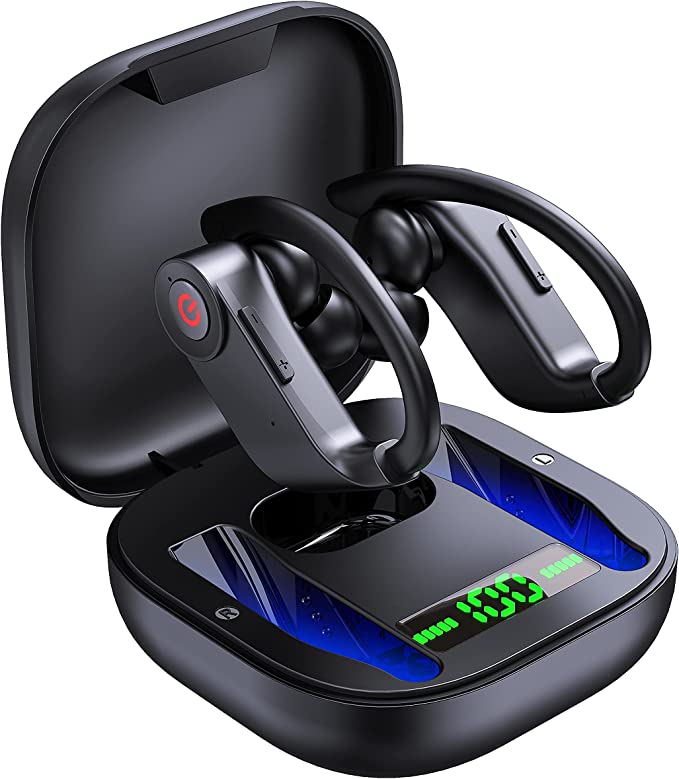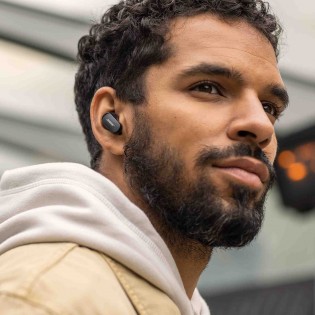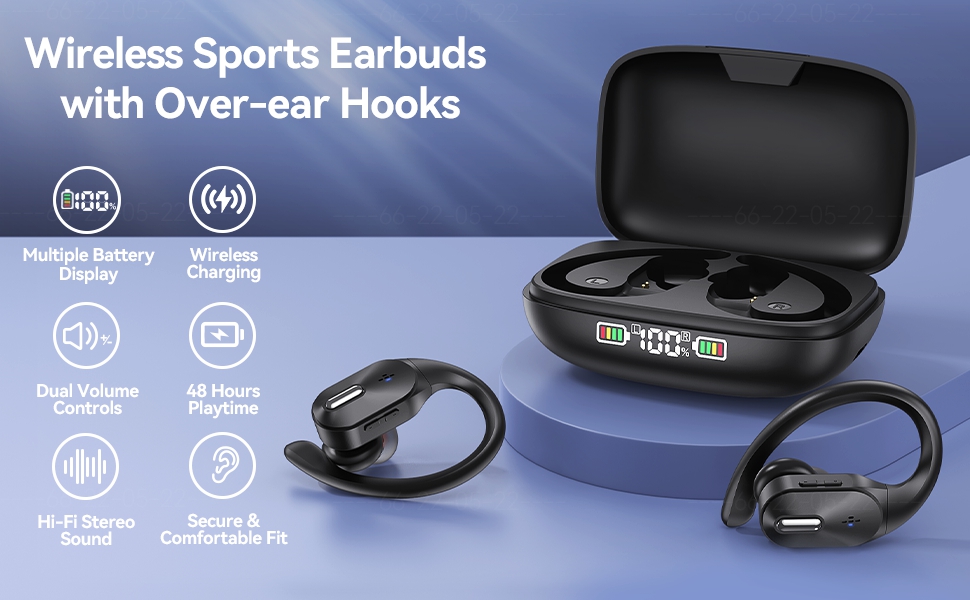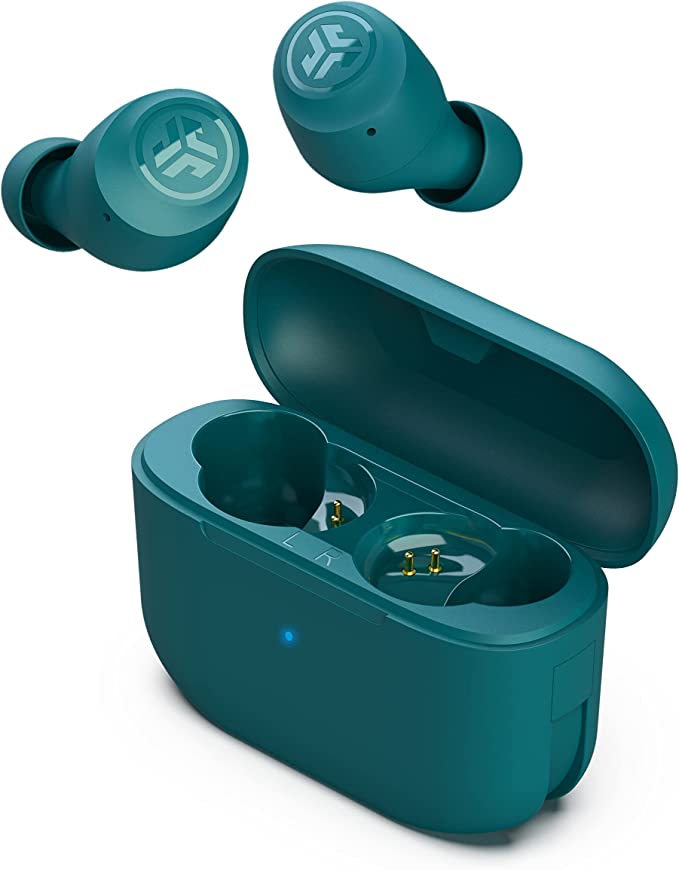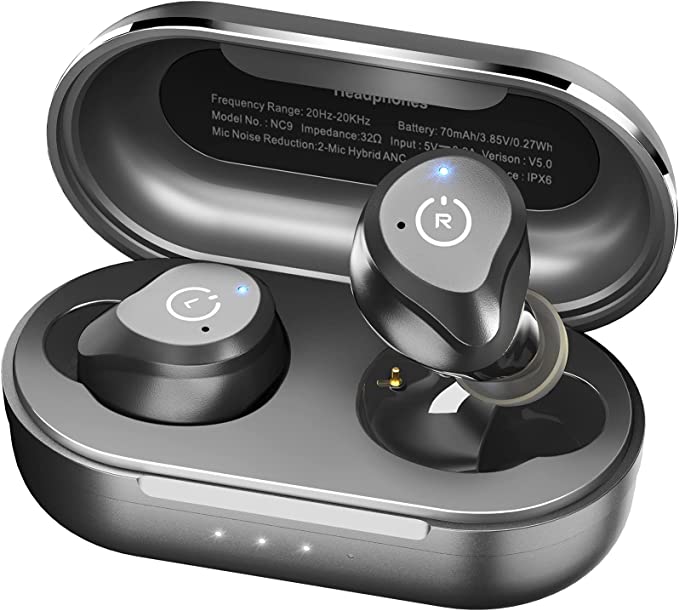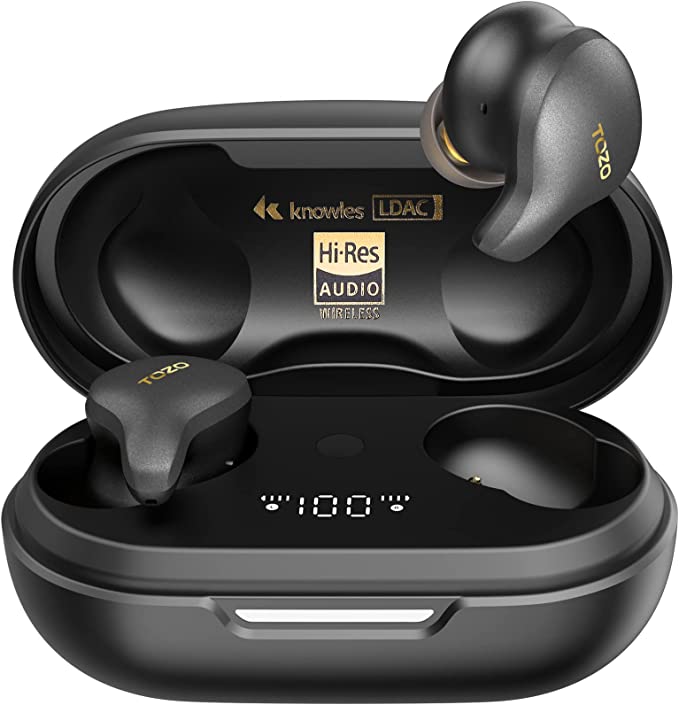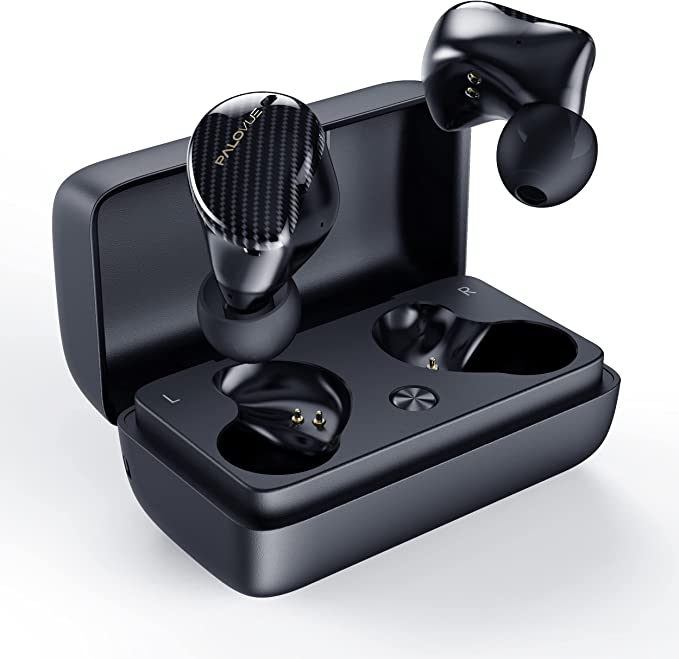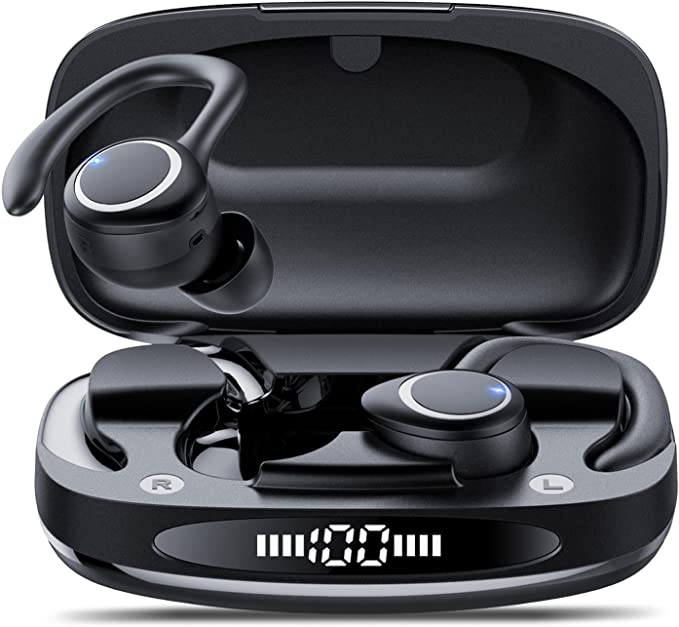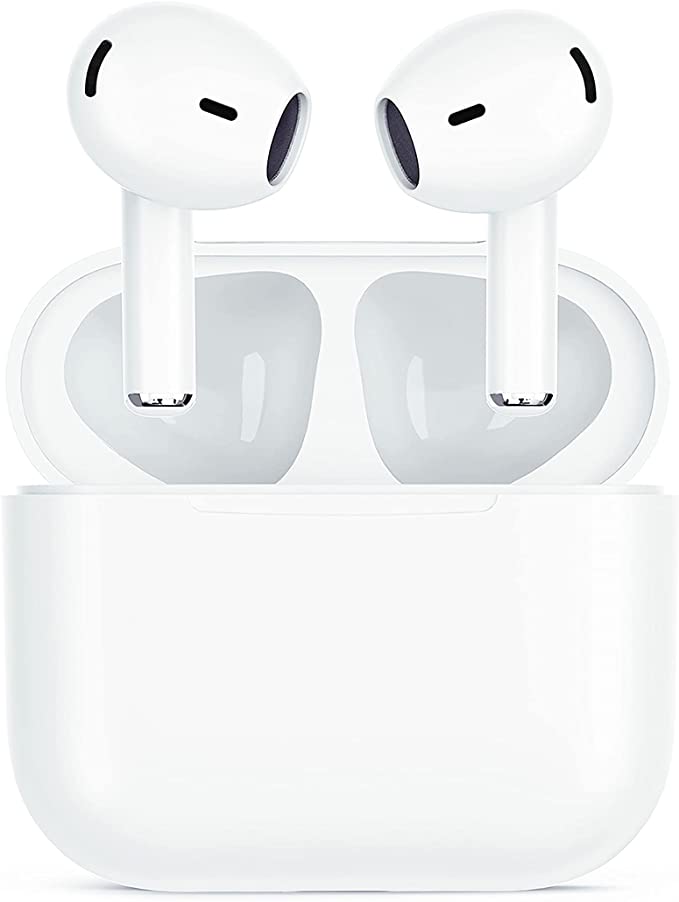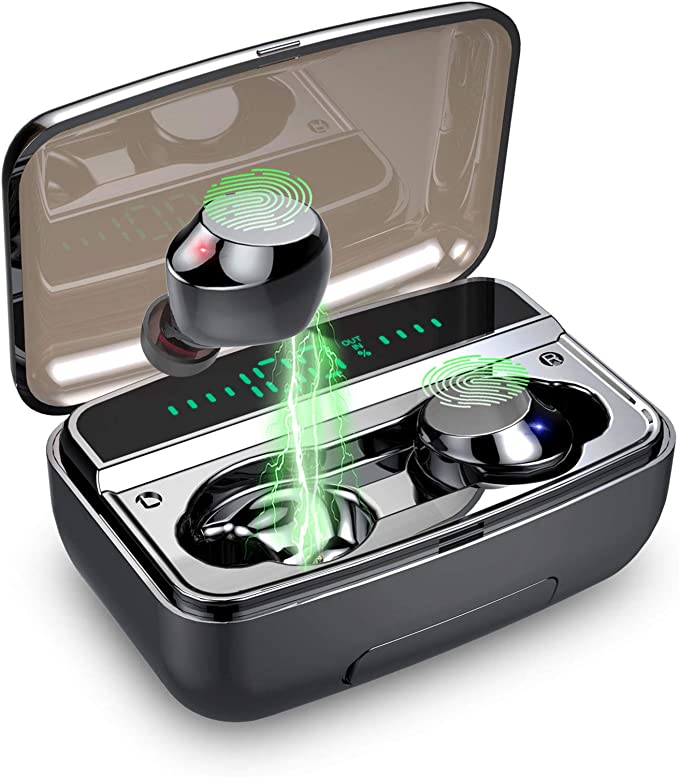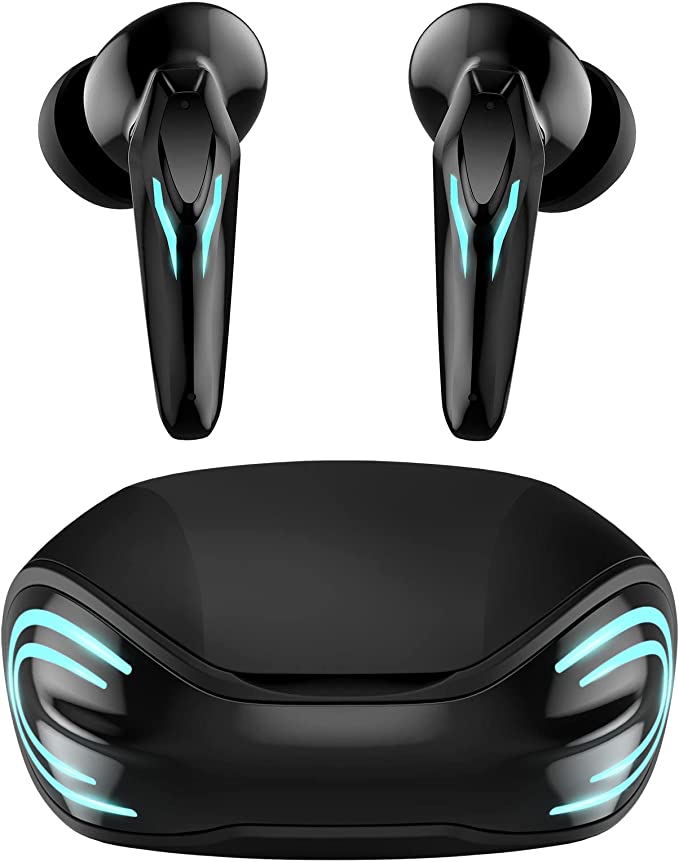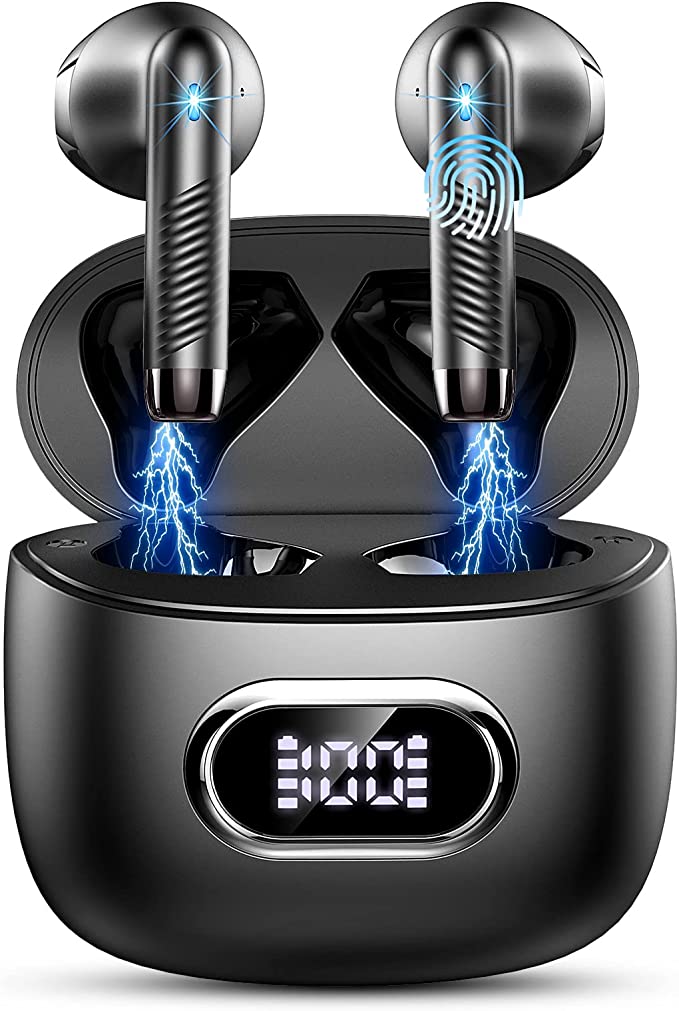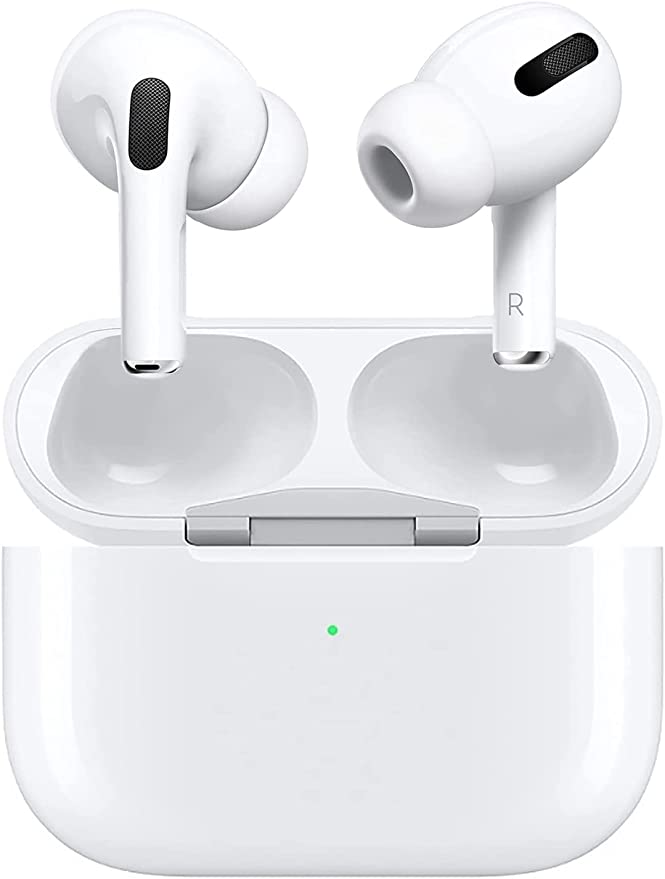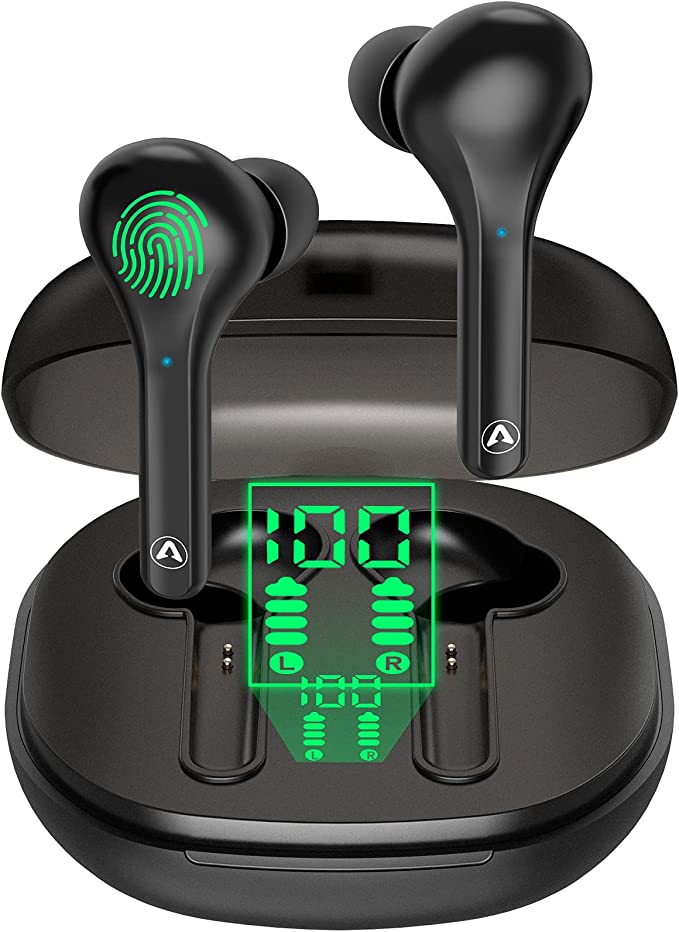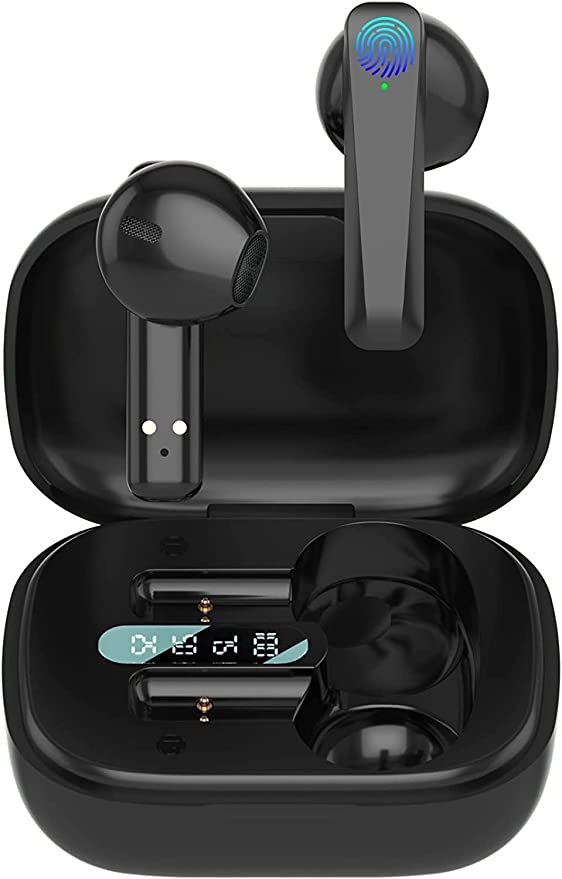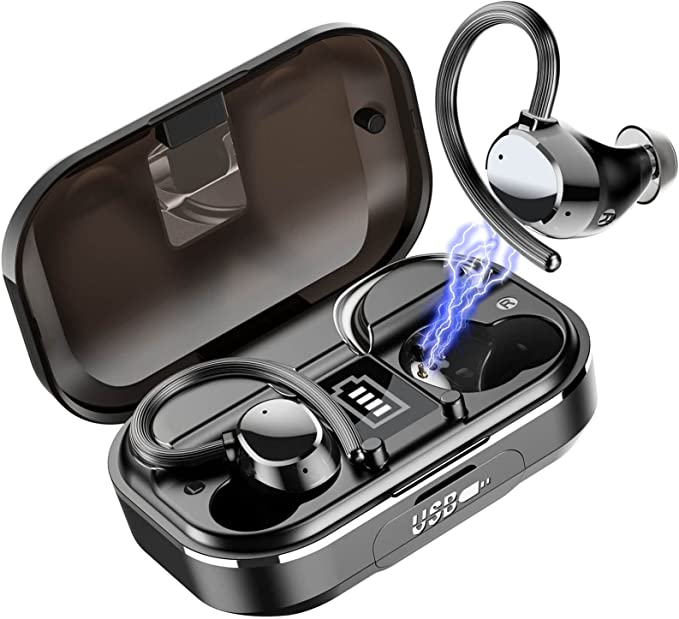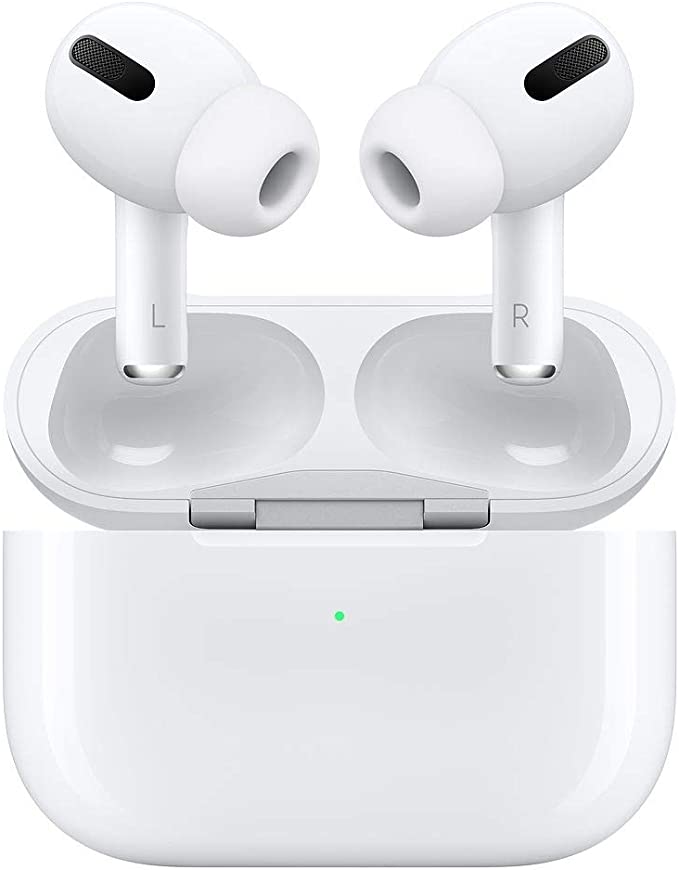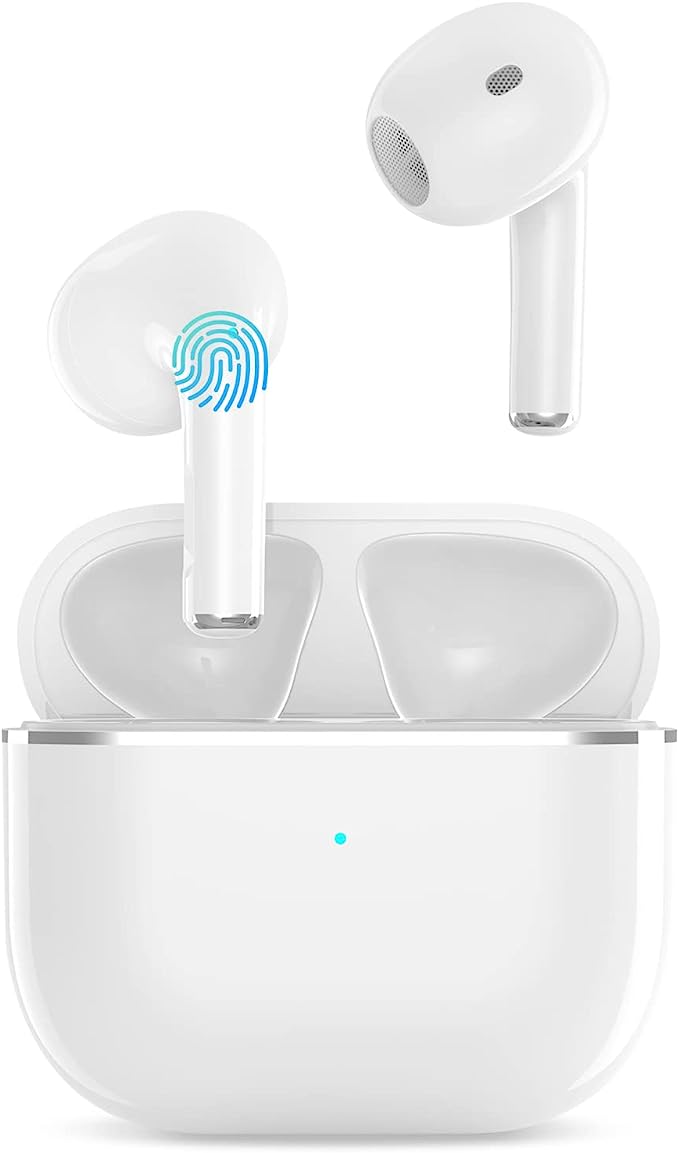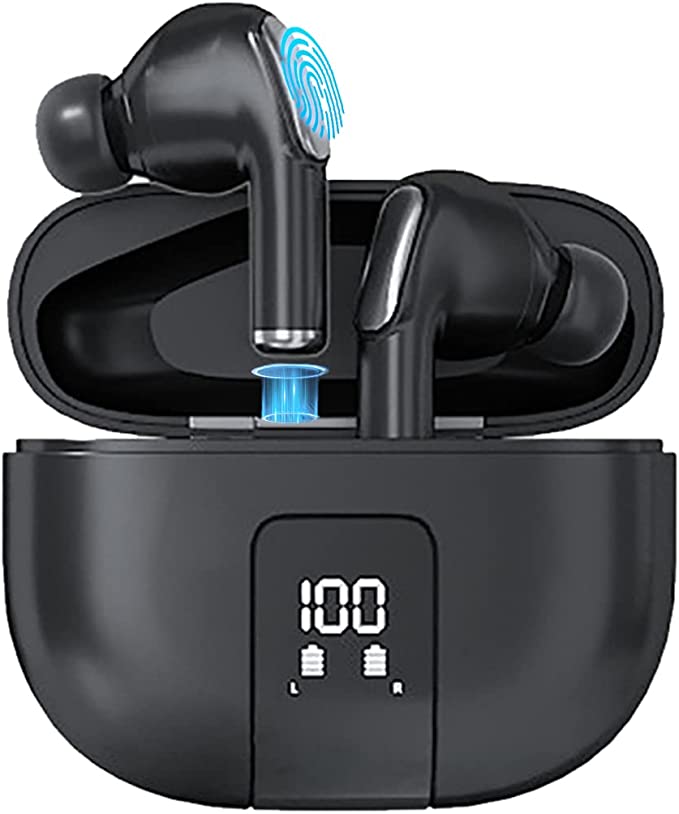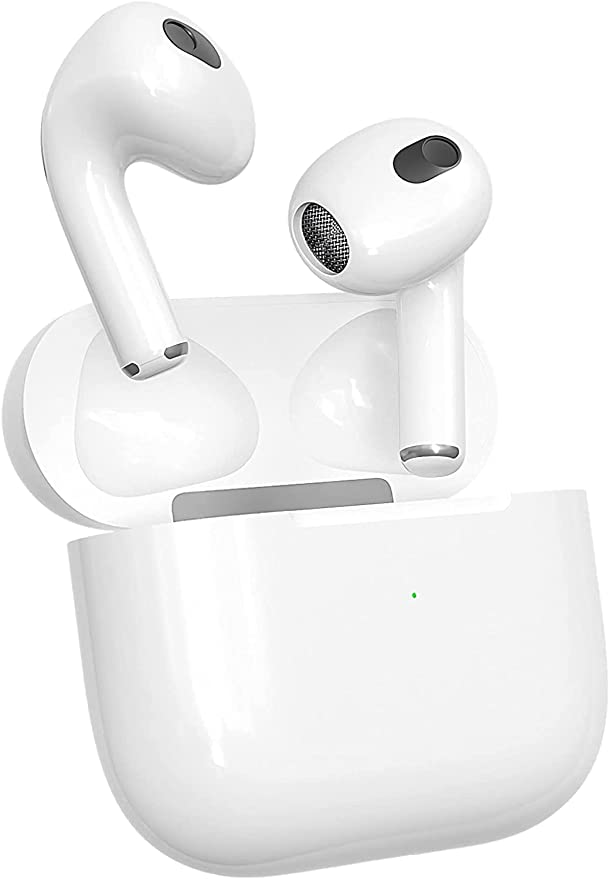Loluka HD-CGR-LQ-T30 Beige Sleep Earbuds - Your Key to Peaceful Sleep
Update on Feb. 8, 2025, 12:16 p.m.
The Unseen World of Sound
Sound, at its core, is a form of energy. It travels in waves, created by vibrations that ripple through a medium, like air or water. These vibrations aren’t just random jiggles; they have specific characteristics that our ears and brains interpret as the rich tapestry of sounds we experience every day. Two key properties define a sound wave: frequency and amplitude.
Frequency, measured in Hertz (Hz), determines the pitch of a sound. A high-frequency vibration, like a bird’s chirp, has many waves packed closely together. A low-frequency vibration, like a rumbling truck, has waves that are more spread out. Amplitude, on the other hand, relates to the intensity or loudness of a sound. It’s the size of the vibration – the bigger the wave, the louder the sound. We measure loudness in decibels (dB), a logarithmic scale that reflects the vast range of sound intensities our ears can handle.

Your Ears: Nature’s Microphones
Our ears are remarkable biological instruments, exquisitely designed to capture these vibrations and transform them into electrical signals that our brains can understand. The process begins with the outer ear, which funnels sound waves into the ear canal. These waves then hit the eardrum, a thin membrane that vibrates in response.
These vibrations are amplified by tiny bones in the middle ear – the smallest bones in the human body – and transmitted to the inner ear, specifically to a snail-shaped structure called the cochlea. Inside the cochlea, thousands of tiny hair cells convert the mechanical vibrations into electrical signals. These signals travel along the auditory nerve to the brain, where they are interpreted as the sounds we hear – music, speech, the gentle hum of a quiet room, or, unfortunately, the disruptive roar of a city street.
The Challenge of Noise
While sound is essential for communication and experiencing the world around us, unwanted sound – noise – can be a significant problem. Noise pollution, a pervasive aspect of modern life, isn’t just annoying; it’s detrimental to our health and well-being.
Chronic exposure to noise, even at levels not considered “deafening,” can lead to a cascade of negative effects. It elevates stress hormones, disrupts sleep, impairs concentration, and, over time, can even contribute to hearing loss. The World Health Organization (WHO) recognizes noise pollution as a serious public health concern, linking it to cardiovascular disease, cognitive impairment, and reduced quality of life. In our increasingly noisy world, finding ways to manage our sound environment is crucial.
Silence by Design: Sound Isolation Explained
This is where sound isolation comes into play. It’s important to distinguish between sound isolation and active noise cancellation (ANC). While both aim to reduce unwanted noise, they achieve this through fundamentally different mechanisms. Active noise cancellation, a more complex technology, uses microphones to “listen” to incoming noise and then generates an opposing sound wave that cancels it out. It’s like fighting fire with fire, but with sound.
Sound isolation, on the other hand, is a passive technique. It relies on physical barriers to block sound waves from entering the ear canal. Think of it like closing a window to muffle street noise. The tighter the seal, the more effective the sound isolation. This is the principle behind the design of many in-ear devices, including the Loluka HD-CGR-LQ-T30 earbuds. These earbuds don’t actively cancel noise; they block it by creating a physical barrier.
The Perfect Fit: Ear Tips and Sound Isolation
The effectiveness of sound isolation hinges on achieving a snug, airtight seal within the ear canal. This is why the ear tips are so crucial. The Loluka HD-CGR-LQ-T30, like many other earbuds, comes with multiple sizes of ear tips, typically made of silicone. Silicone is a popular choice because it’s soft, flexible, and durable, allowing it to conform to the shape of the ear canal.
The size of the ear tip is critical. Too small, and the tip won’t create a proper seal, allowing sound to leak in. Too large, and the tip will be uncomfortable and may not fit securely in the ear canal. Finding the right fit is a matter of personal preference and ear anatomy.
It’s also worth noting the feedback from some users who found the Loluka earbuds “too big” for sleeping. This highlights the inherent variability in ear canal shapes and sizes. While the earbuds are designed to be small and low-profile, they may not be comfortable for everyone, especially side-sleepers who put pressure on their ears. This underscores the importance of trying different ear tip sizes and, if necessary, exploring alternative earbud designs if comfort is a primary concern during deep sleep. The design, however, lends itself well to situations where you might want to reduce distractions without completely eliminating all sound – working in a busy home office, studying in a library, or traveling.
Untangling the Wires: The Rise of Wireless Audio
For decades, headphones were tethered to our audio devices by wires. While functional, these wires were often inconvenient, prone to tangling, and limiting in terms of movement. The advent of wireless technology, specifically Bluetooth, revolutionized personal audio.
The earliest headphones, dating back to the late 19th century, were bulky and primarily used for telephone switchboard operation. Over time, headphones evolved, becoming smaller, lighter, and more sophisticated. The development of stereo sound in the mid-20th century further enhanced the listening experience. However, it wasn’t until the late 20th and early 21st centuries that wireless technology truly took off, paving the way for the compact, convenient earbuds we use today.

Bluetooth 5.1: The Invisible Connection
Bluetooth is a short-range wireless communication technology that allows devices to exchange data without physical cables. It operates in the 2.4 GHz radio frequency band, the same band used by Wi-Fi and other wireless devices. The Loluka HD-CGR-LQ-T30 earbuds utilize Bluetooth version 5.1, a significant advancement over earlier versions.
The key improvements in Bluetooth 5.1 are lower power consumption and enhanced connection stability. Lower power consumption is achieved through several technical refinements, including more efficient data encoding and improved power management. This translates directly to longer battery life for the earbuds, allowing for extended listening sessions without frequent recharging.
Enhanced connection stability means a more reliable link between the earbuds and the connected device (phone, tablet, computer). This reduces the likelihood of audio dropouts or interruptions, providing a smoother and more enjoyable listening experience. Bluetooth 5.1 also includes features that improve location accuracy, although this is less relevant for earbuds than for other applications like tracking devices.

Ready for Anything: Understanding IPX4
The “IP” in IPX4 stands for “Ingress Protection.” It’s an international standard that defines levels of protection against the intrusion of solid objects (like dust) and liquids (like water). The “X” in IPX4 means that the device has not been tested for protection against solid objects. The “4” indicates the level of protection against water.
An IPX4 rating means that the Loluka HD-CGR-LQ-T30 earbuds are protected against splashes of water from any direction. This doesn’t mean they’re waterproof – you shouldn’t submerge them in water or wear them while swimming. However, it does mean they can withstand sweat during exercise, light rain, or accidental splashes without damage. This makes them a practical choice for active users and those who want earbuds that can handle the rigors of daily life.

Power in Your Pocket: The Charging Case and Battery Life
One of the defining features of wireless earbuds is their portability, and that portability is intimately linked to battery life. The Loluka HD-CGR-LQ-T30 earbuds offer a respectable 6 hours of playtime on a single charge. However, the true magic lies in the included charging case.
The charging case is more than just a storage container; it’s a portable power bank for the earbuds. It contains its own battery that can recharge the earbuds multiple times, extending the total playtime to 18 hours. This means you can go an entire day, or even longer, without needing to plug the case into a power outlet.
The earbuds themselves likely use lithium-ion polymer (LiPo) batteries, a common choice for small, portable electronics due to their high energy density, light weight, and relatively long lifespan. The charging case likely uses a similar battery technology.

LED Digital Power Display: No More Guesswork
One user-friendly feature of the Loluka HD-CGR-LQ-T30 earbuds is the LED digital power display on the charging case. This seemingly simple addition eliminates the uncertainty often associated with wireless devices: “How much battery life is left?”
The display uses light-emitting diodes (LEDs) to show the remaining power level of the charging case, typically as a percentage. This is achieved through a combination of a microcontroller, a voltage sensor, and the LEDs themselves.
1. Micro Control Unit: Micro Control Unit is short for MCU.Just like central processing unit(CPU).It is the brain of the charging case.
2. Voltage Sensor: The voltage sensor measures the voltage of the charging case’s battery. The voltage level is directly related to the amount of charge remaining – a higher voltage generally indicates a fuller charge.
3. Digital Display: The digital display receives information to show numbers.
Beyond Silence: Other Features
While the primary focus of the Loluka HD-CGR-LQ-T30 earbuds is sound isolation and wireless convenience, they do include a few other features. Built-in touch controls allow you to manage music playback and answer calls without having to reach for your phone. These controls typically rely on capacitive touch sensors, similar to those used in smartphone touchscreens. These sensors detect the change in capacitance caused by the touch of a finger, registering it as a command (play, pause, skip track, answer call, etc.). A built-in microphone also enables hands-free calling and voice assistant interaction (like Siri or Google Assistant). While convenient, these features are secondary to the core functionality of sound isolation and wireless audio.
The Limits of Isolation
It’s crucial to understand that sound isolation, while effective, is not a perfect solution. It reduces noise; it doesn’t eliminate it entirely. The effectiveness of sound isolation depends on several factors, including the frequency of the sound, the material and fit of the ear tips, and the overall design of the earbuds.
Lower-frequency sounds, like the rumble of a bus engine or the hum of an airplane, are more difficult to block than higher-frequency sounds, like the clatter of keyboards or the chirping of birds. This is because lower-frequency sound waves have longer wavelengths, which can more easily bend around and penetrate barriers. While sound isolation can significantly reduce the intensity of low-frequency sounds, it’s less likely to eliminate them completely.
Furthermore, even with a perfect seal, some sound can still be transmitted through the bones of the skull, a phenomenon known as bone conduction. This is why you can still hear yourself speak even when your ears are completely blocked.
Finally, it’s important to be mindful of potential drawbacks. Prolonged use of earbuds, especially at high volumes, can contribute to earwax buildup and, in extreme cases, hearing damage. Regular cleaning of the earbuds and ear tips is essential for hygiene. And, crucially, never use earbuds at a volume that prevents you from hearing important sounds in your environment, especially when walking or cycling near traffic.

A Quieter Future
The pursuit of quiet is an ongoing endeavor. As our world becomes increasingly noisy, the need for effective noise management solutions will only grow. Wireless earbuds with sound isolation, like the Loluka HD-CGR-LQ-T30, represent one approach to reclaiming control over our auditory environment. They offer a way to create pockets of peace amidst the chaos, allowing us to focus, relax, and protect our hearing.
While technology can provide tools, it’s also important to cultivate mindful listening habits. This includes being aware of our sound exposure, taking breaks from noise, and using hearing protection when necessary. The future of quiet isn’t just about better technology; it’s about a greater awareness of the impact of sound on our lives and a commitment to creating healthier soundscapes for ourselves and our communities. The story of these seemingly simple earbuds is, in fact, a part of a much larger story – the ongoing quest for a more balanced and harmonious relationship with the sounds that surround us.
